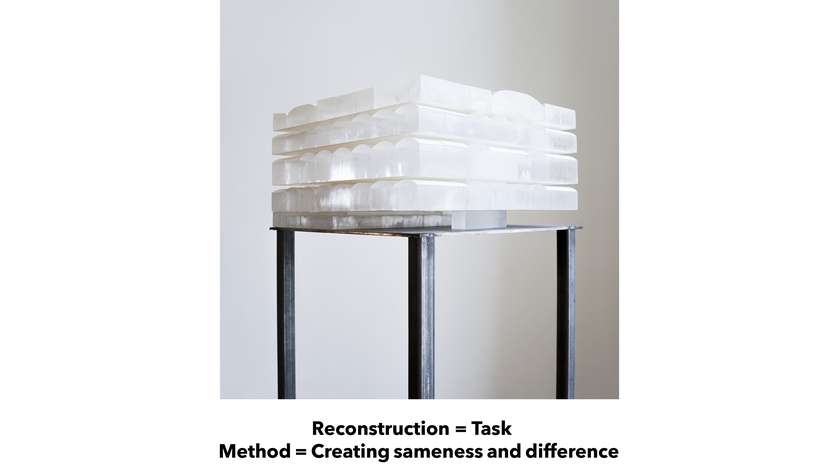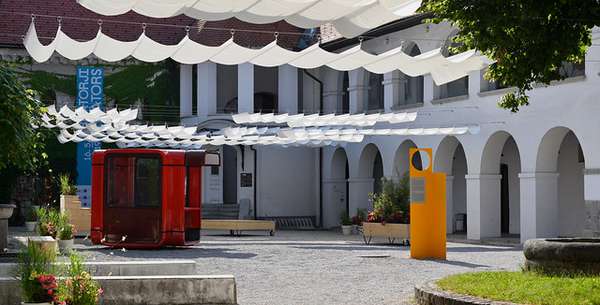Idea by
Hendrik Brinkmann
https://www.world-architects.com/hendrik-brinkmann-berlin
Call for ideas 2019
Neue Bauakademie Berlin
Neue Bauakademie Berlin
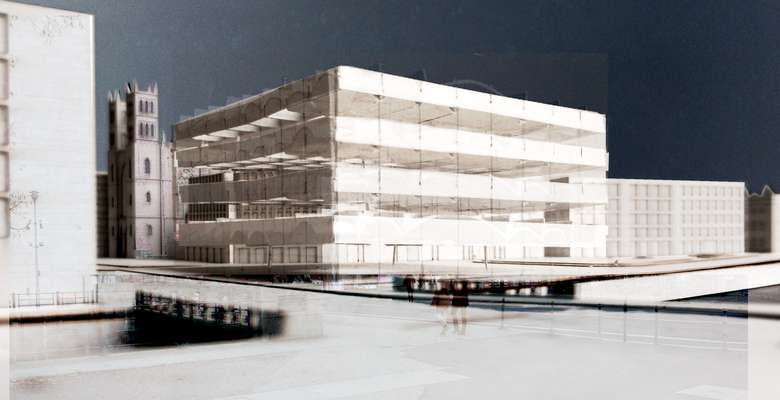
- Systemic changes
Working on reconstruction is accompanied by a set of questions that expand typical design problems: All future design decisions negotiate their justification with a building long gone but very prominent in mind.
The term reconstruction implies the dialectic of two aspirations: the repetition of ‘something past’ and the creation of ‘something new’. A design-work under the subject of reconstruction always requires both. Neither a complete simulacrum of an ancestor nor an alienating new can be considered as a valid contribution. Reconstruction is the task to build a critical link between the previous and the nascent, between memory and vision and the resulting architecture can be read as a manifestation of a specific stance on the subject of reconstruction.
A reconstructing architectural design is a balancing act between providing sameness and introducing new expressions. By identifying the sameness we simultaneously recognize the difference and vice versa.
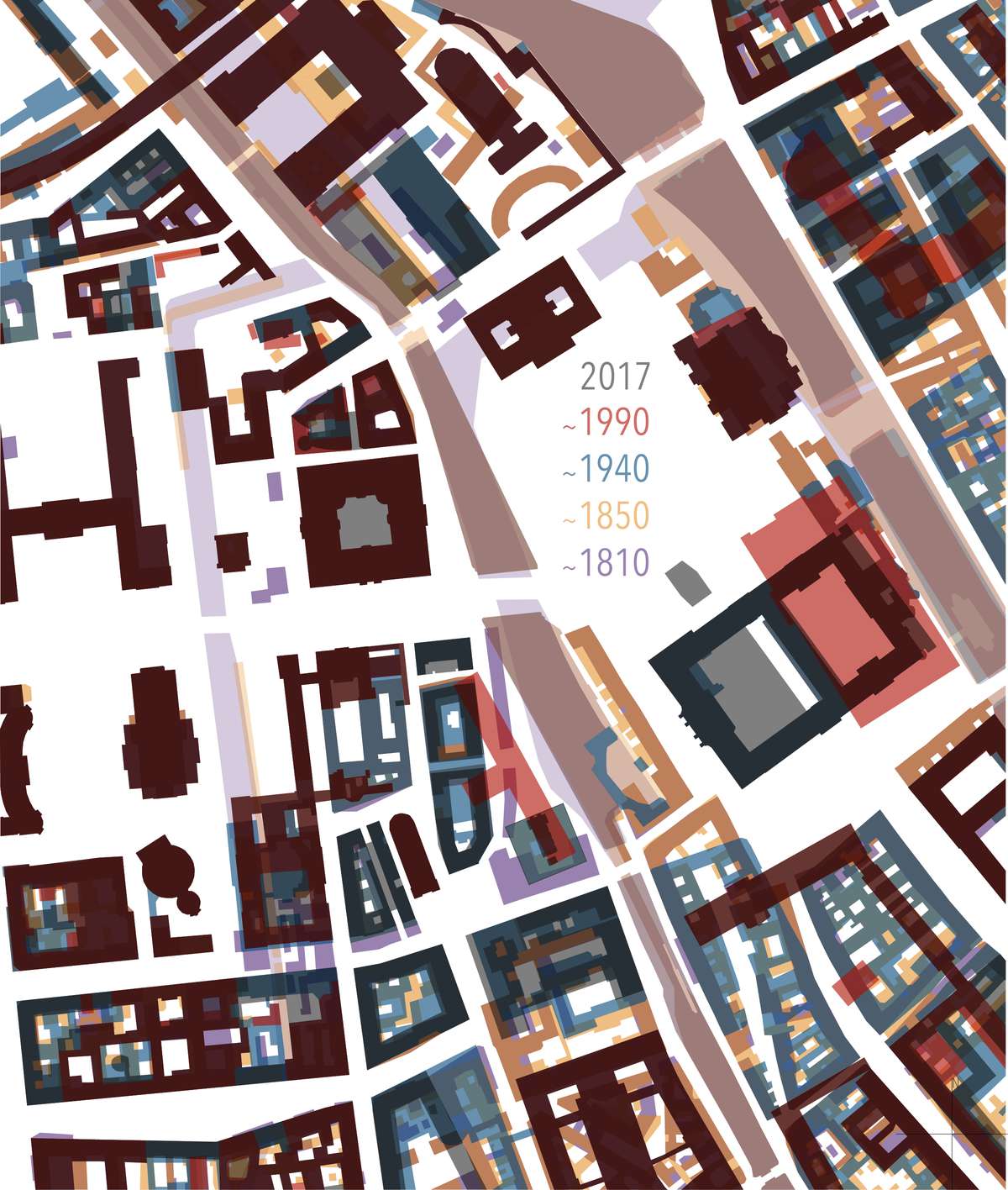
Superimposition of historical layers of Berlin Mitte — morphological studies showing the constantly transforming city of Berlin in an overlay of five significant stages
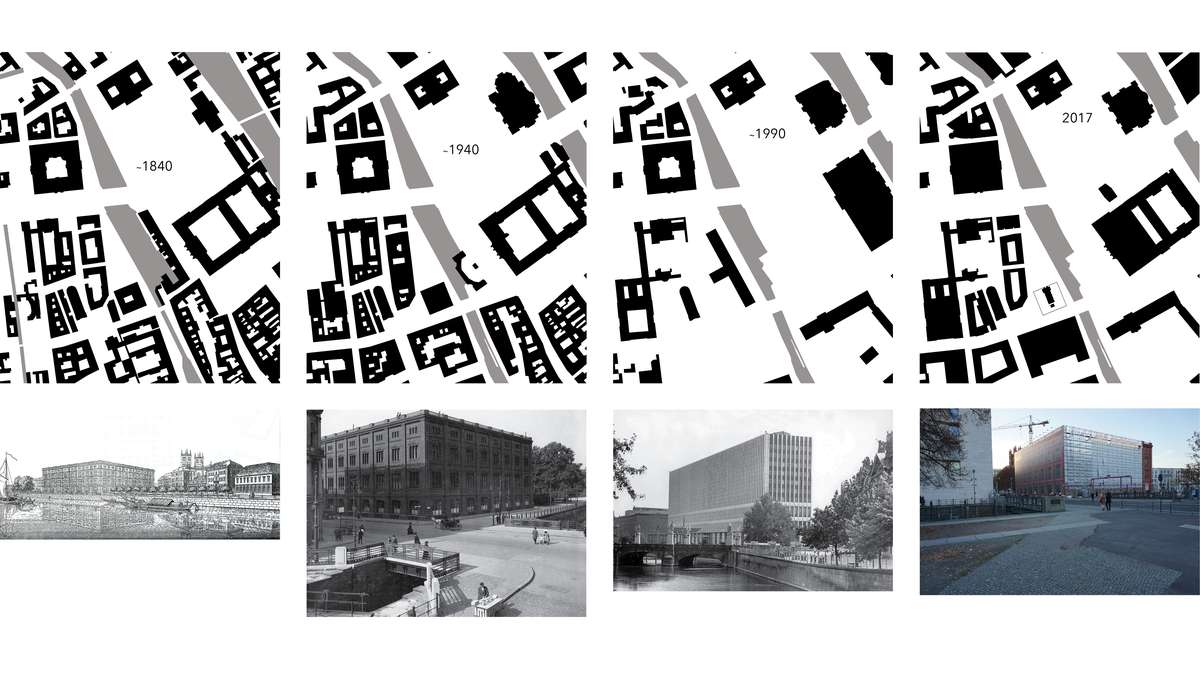
The Bauakademie site over the years — copperplate print by Karl Friedrich Schinkel, modified Bauakademie used as Institute for International Sciences, foreign ministry of the GDR, mock-up showing a flat image of the building

First floor of Schinkel´s Bauakademie, picture of Bauakademie ruin, first sketch of a new Bauakademie
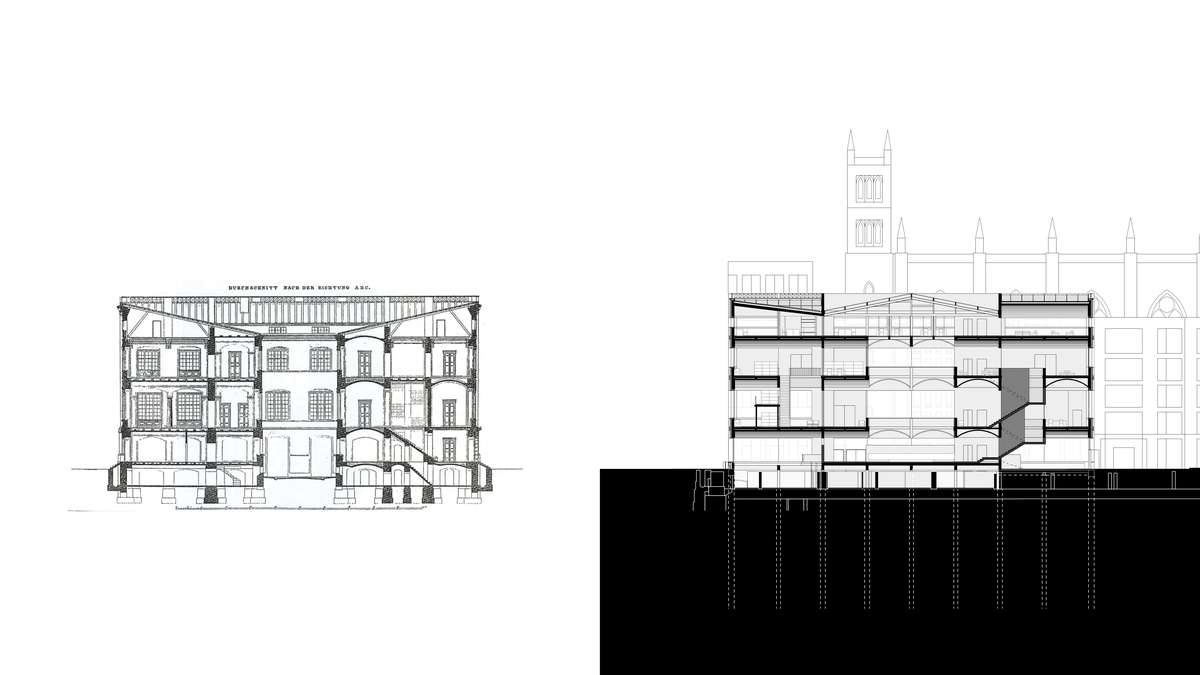
Opposition of sections — old and new Bauakademie

Neue Bauakademie Berlin
Neue Bauakademie Berlin

- Systemic changes
Working on reconstruction is accompanied by a set of questions that expand typical design problems: All future design decisions negotiate their justification with a building long gone but very prominent in mind.
The term reconstruction implies the dialectic of two aspirations: the repetition of ‘something past’ and the creation of ‘something new’. A design-work under the subject of reconstruction always requires both. Neither a complete simulacrum of an ancestor nor an alienating new can be considered as a valid contribution. Reconstruction is the task to build a critical link between the previous and the nascent, between memory and vision and the resulting architecture can be read as a manifestation of a specific stance on the subject of reconstruction.
A reconstructing architectural design is a balancing act between providing sameness and introducing new expressions. By identifying the sameness we simultaneously recognize the difference and vice versa.
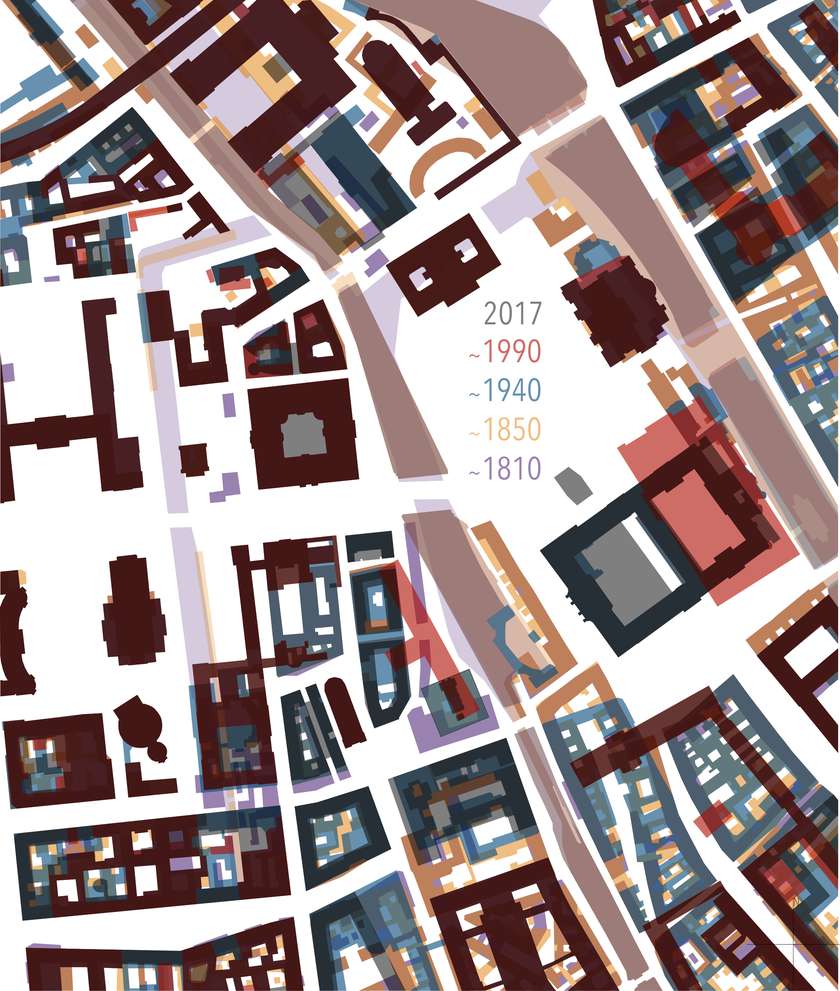
Superimposition of historical layers of Berlin Mitte — morphological studies showing the constantly transforming city of Berlin in an overlay of five significant stages
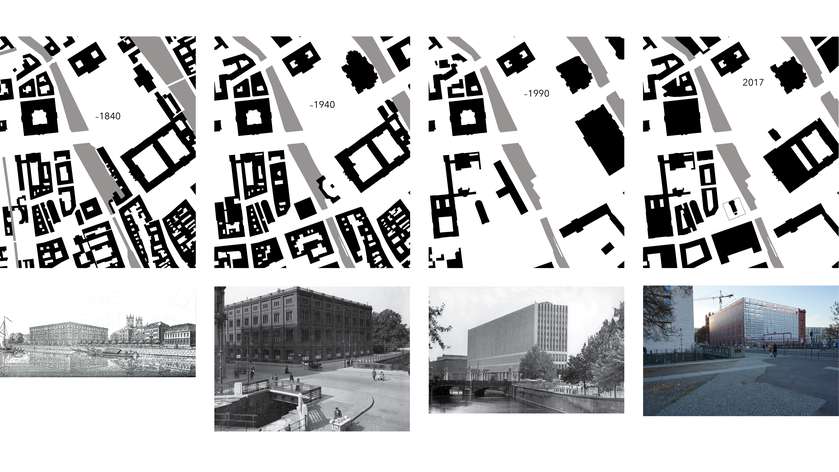
The Bauakademie site over the years — copperplate print by Karl Friedrich Schinkel, modified Bauakademie used as Institute for International Sciences, foreign ministry of the GDR, mock-up showing a flat image of the building
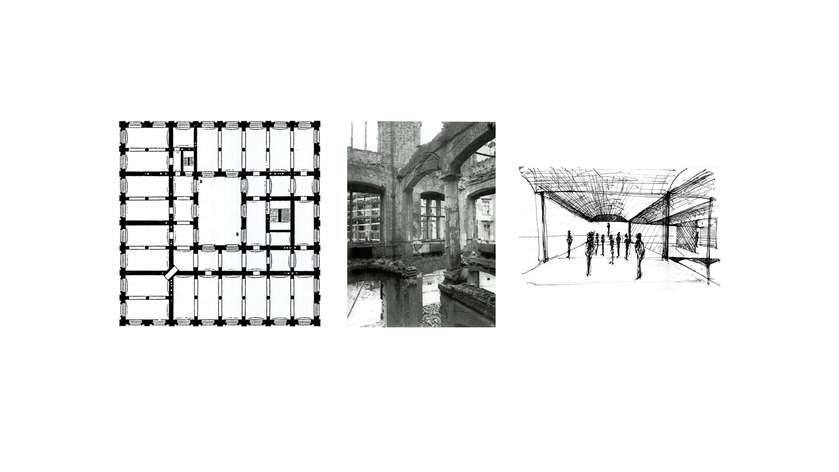
First floor of Schinkel´s Bauakademie, picture of Bauakademie ruin, first sketch of a new Bauakademie
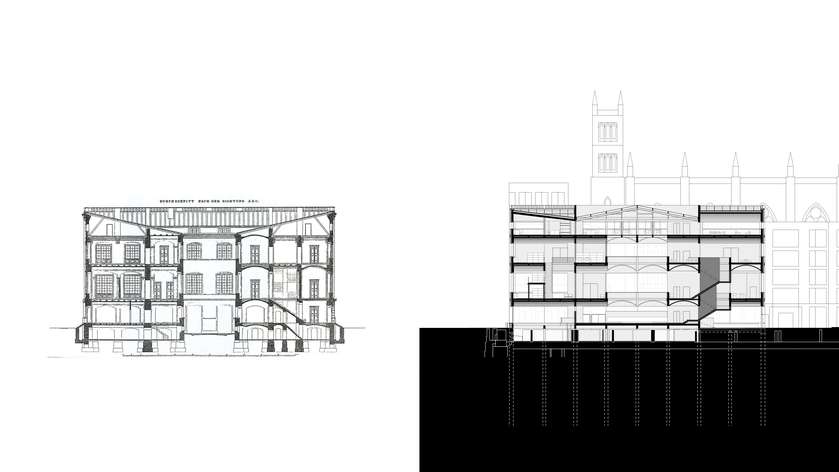
Opposition of sections — old and new Bauakademie
